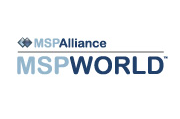Be Cautious in Navigating Microsoft’s Forest of EA Documents

Companies with experience licensing Microsoft software and services through Enterprise Agreements know that small forests could be felled to produce the paper required for the typical document stack. EAs often incorporate a dozen or more different components, including some or all of the following:
- Microsoft Business and Services Agreement or Microsoft Business Agreement (Microsoft sometimes will agree to use existing master agreements)
- Online Services Supplemental Terms and Conditions (if an existing, older-form master agreement is to be used)
- Enterprise Agreement (Microsoft sometimes will agree to use existing base EAs)
- Enterprise Enrollment
- Customer Price Sheet
- Product Selection Form
- One or more custom terms amendments (if custom terms have been negotiated)
- One or more standard-form amendments (to cover product-specific or service-specific matters for which Microsoft offers off-the-shelf terms)
- Product Terms (typically incorporated by reference)
- Online Services Terms (typically incorporated by reference)
- Service Level Agreement for Online Services (sometimes incorporated by reference)
- Supplemental Contact Information Form
- Tax Terms and Conditions Form
- Signature Form
Many of the standard forms are administrative in nature and rarely incorporate substantive terms or conditions. However, Microsoft occasionally will incorporate substantive or potentially substantive language in forms that otherwise would appear to have only administrative purposes. A good example is the Customer Price Sheet (CPS).
The primary purpose of the CPS is to list the products and services being ordered under an EA, the order quantities, and the prices to be paid. The CPS also typically identifies the prices that will apply to true-up orders during the term as well as end-of-term buy-out prices for subscription licenses.
Toward the end of the CPS, there usually are included sections labeled “Product Notes” and/or “Terms and Conditions.” Ideally, those sections should be used exclusively to help navigate the CPS and to clarify any custom license metrics that may apply to the EA transaction. However, Microsoft sometimes will include language in those sections that should be the subject of legal negotiations or even that contradicts substantive terms that may have agreed in a custom terms amendment. For example, the parties may reach a special agreement regarding the mechanics for placing incremental true-up orders, but the notes in the CPS may reference standard true-up procedures. This can be especially problematic in time-sensitive negotiations, because the CPS often is among the last documents to be finalized for legal review and approval.
Businesses neglect a thorough review of all EA document components at their peril. Business and legal teams need to push early and often to insist that Microsoft circulate final-form versions of each and every part of the document stack as soon as possible to ensure a smooth transaction. Those teams also need to be prepared to scrutinize every page of that stack to ensure that there are no surprises that are inconsistent with the business’s expectations.




